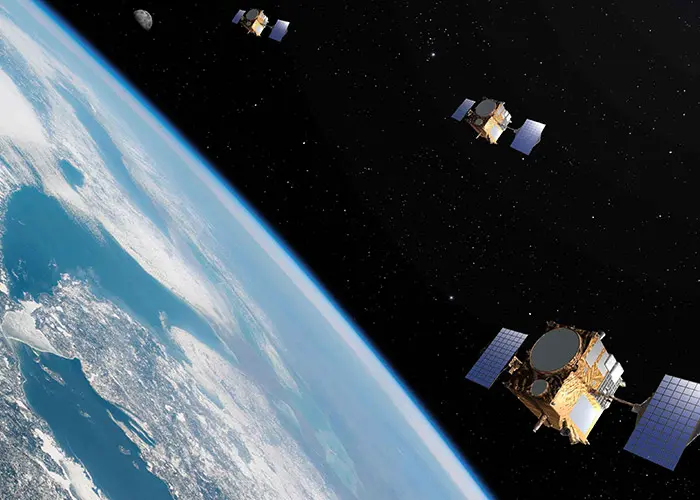
A consortium funded by Horizon Europe is developing laser sensors that help satellites navigate with ultra precision and enable drones to fly further for longer.
The new INPHOMIR project, launched by the European Commission under the Photonics Partnership and supported by Photonics21, is poised to reshape space exploration and autonomous systems with new sensors that use tiny pulses of laser light to improve satellite navigation and earth observation. It offers the opportunity to unlock new possibilities in space navigation, autonomous systems, and earth monitoring while boosting Europe’s technological sovereignty.
The INPHOMIR project intends to develop two new ultra-low-power compact sensing devices; an optical gyroscope and a mid-infrared frequency-modulated continuous wave (FMCW) lidar, that will aim to make space missions more efficient and cost-effective.
The sensors used in space navigation and autonomous systems today can struggle with precision in harsh environments with low visibility, like fog or dust. Small measurement errors can lead to major problems in trajectory and positioning over long distances in space. At the same time, existing sensors can consume large amounts of power, which is extremely limited in space and autonomous systems. High power consumption can quickly drain batteries and limit the operational time of space satellites and drones.
“As we aim to explore space much deeper while conducting more complex missions, the need for precise, reliable, and efficient sensors is now more critical than ever, said INPHOMIR Project Coordinator Daniele Palaferri. “The advanced sensing technologies we are developing will hopefully enhance the accuracy of satellite positioning, improve navigation for interplanetary missions, and ensure the success of space exploration.”
The gyroscope will use laser light to measure how fast and in which direction something is spinning. Sensors detect these changes and calculate the exact movement and direction. The mid-infrared FMCW lidar, a technology similar to radar, uses laser light instead of sound to create detailed 3D maps of the environment.
“Think of a bat’s echolocation system, but for machines like drones and self-driving cars,” said Palaferri. “Our frequency-modulated continuous wave is a fancy way of saying that the lidar sends out a continuous laser beam that changes its frequency over time. By doing this, it can measure distances very accurately, even if objects are moving. For drones and self-driving cars, this lidar helps them see their surroundings in incredible detail, even in bad weather or at night, allowing safer and more reliable operation. In space missions, this technology can help satellites and rovers navigate and map out unknown terrains with precision.”
The INPHOMIR sensing technologies are also being developed to improve upon existing drones, including the Horus, Helyx-Zero, and Helyx-One varieties, helping them navigate on their own. These drones will make tasks like surveying land, inspecting buildings, and farming much easier and more accurate. Using the advanced AI technology being developed by the INPHOMIR team, these drones will work on their own, saving time and reducing human effort.
By also providing miniaturised and advanced photonic technologies, the INPHOMIR project is set to boost European industries and help create an EU photonic integrated circuits (PIC) ecosystem. “Our pioneering advancements in PIC-based hardware technology promise to revolutionise the supply chain management processes of EU companies,” added Palaferri. “With our own supply of PICs, Europe can innovate faster and create new technologies, keeping us at the forefront of technological advancements. We are helping to enhance the EU’s sovereignty by developing a self-sufficient ecosystem for photonic technologies. The project’s success will mark a significant milestone in photonic sensing technology, offering a competitive edge to European industries, reinforcing the EU’s commitment to technological excellence.”
The INPHOMIR project is a collaborative endeavour funded under the HORIZON-RIA (HORIZON Research and Innovation Actions) and supported by the Horizon Europe program, the EU’s top funding program for research and innovation. The project brings together a consortium of academic institutions and industrial partners.
The multidisciplinary project is coordinated in Italy by GEM ELETTRONICA SRL and will conclude in 2027. It includes eight other partners: Politecnico Di Bari, Sigma Ingegneria Srl, Warrant Hub Spa (Italy), Technische Universiteit Eindhoven (Netherlands), Technische Universitaet Muenchen(Germany), University College Cork – National University Of Ireland, Cork (Ireland), Endurosat Ad (Bulgaria), and Bewarrant (Belgium).





